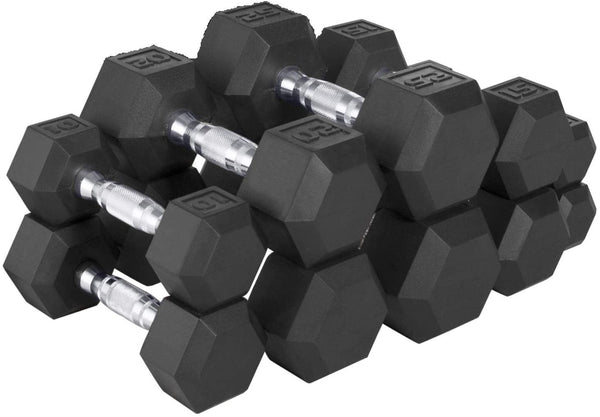Your Cart is Empty
June 27, 2023 4 min read
Deadlifting is a great exercise for building strength and power, but it’s easy to make mistakes that can lead to injury or decreased performance. If you’re new to deadlifting, or if you’ve been doing it for a while but want to up your game, here are some common errors to look out for and how to fix them.
Shop The Collection: Squat RacksThe setup of your deadlift is one of the most important aspects of the lift. You need to get into the correct position before even attempting to move the weight, otherwise you’ll be fighting an uphill battle from the start. Common mistakes include not having your feet in the right position, not using a hip hinge to initiate the movement, and rounding your back.
 Shop The Gear: Altas AL-6008 Squat Rack, $999.00 USD
Shop The Gear: Altas AL-6008 Squat Rack, $999.00 USD
To set up correctly, place your feet shoulder-width apart with your toes slightly pointing outward. Keep your chest up, core tight, and shoulders over the bar. Push your hips back as you begin to lower yourself, keeping your back flat. This hip hinge will help you use the power of your glutes and hamstrings to lift the weight and protect your lower back from strain.
Shop The Collection: DumbbellsRounding your back is one of the most common mistakes when deadlifting. This happens when you don’t keep your chest up and your spine in its natural alignment. Rounding your back puts stress on the discs in your spine, leading to pain and potential injury. To avoid this, focus on keeping your chest up and your core tight throughout the entire lift.
 Shop The Gear: CAP Barbell 5-25 LB Rubber Hex 150LB Dumbbell Set, $176.99 USD
Shop The Gear: CAP Barbell 5-25 LB Rubber Hex 150LB Dumbbell Set, $176.99 USD
If you find yourself struggling to maintain a flat back while deadlifting, try using lighter weights until you get the hang of it. A good way to practice is to perform sets of deadlifts against a wall. This will help you maintain the correct form and strengthen your muscles at the same time.
Hitching is another common mistake when deadlifting. This is when you jerk the weight up off of the floor by using momentum instead of your muscles. Not only does this reduce the effectiveness of the exercise, it also puts you at risk of a serious injury. To avoid hitching, focus on maintaining control of the weight throughout the entire range of motion. Don’t allow your body to swing or arch your back to heave the weight up.
When it comes to hitching, practice makes perfect. Start with a light weight and focus on using your muscles to lift the weight slowly and steadily. As you become more comfortable, you can gradually increase the weight until you’re able to lift heavier weights without hitching.
One of the most common deadlifting mistakes is not utilizing your legs when lifting. Many people rely too heavily on their upper body to lift the weight, which can lead to fatigue and possible injury. The key is to use a combination of your legs, glutes, and back to lift the weight. This will help you lift heavier weights with less effort, as well as reduce the risk of injury.
To ensure you’re using your legs when deadlifting, focus on pushing your feet into the floor as you drive through the lift. This will engage your quads, glutes, and hamstrings and help you lift the weight more efficiently. Additionally, make sure you’re taking full advantage of the stretch reflex by driving your knees forward as you stand up.
Many people make the mistake of lifting too heavy when they first start deadlifting. While it’s natural to want to progress quickly, it’s important to take the time to master the correct form before adding more weight. Otherwise, you’ll be at risk of injuring yourself and won’t get the most out of the exercise.
Start with a light weight and focus on nailing your form. Gradually increase the weight as you become more comfortable and add more sets and reps. If you find yourself struggling with the weight, don’t feel embarrassed to drop back down and work your way up again. Ultimately, you’ll be glad you did.
Engaging your core muscles is essential for any type of lifting, including deadlifts. Not only does it help to stabilize your spine, it also helps to generate power during the lift. To engage your core, focus on drawing your belly button towards your spine as you set up for the lift. This will help to support your spine and keep it in its natural alignment.
Additionally, make sure you’re breathing properly during the lift. Exhale as you lift the weight and inhale as you lower it. This will help to keep your core engaged and provide stability throughout the entire range of motion.
Deadlifting is a great exercise for building strength and power, but it’s important to be aware of the common mistakes that can lead to injury or decreased performance. Take the time to learn and practice the correct form, and focus on engaging your core, legs, and glutes when lifting. Doing so will help you lift heavier weights with less effort and reduce the risk of injury.